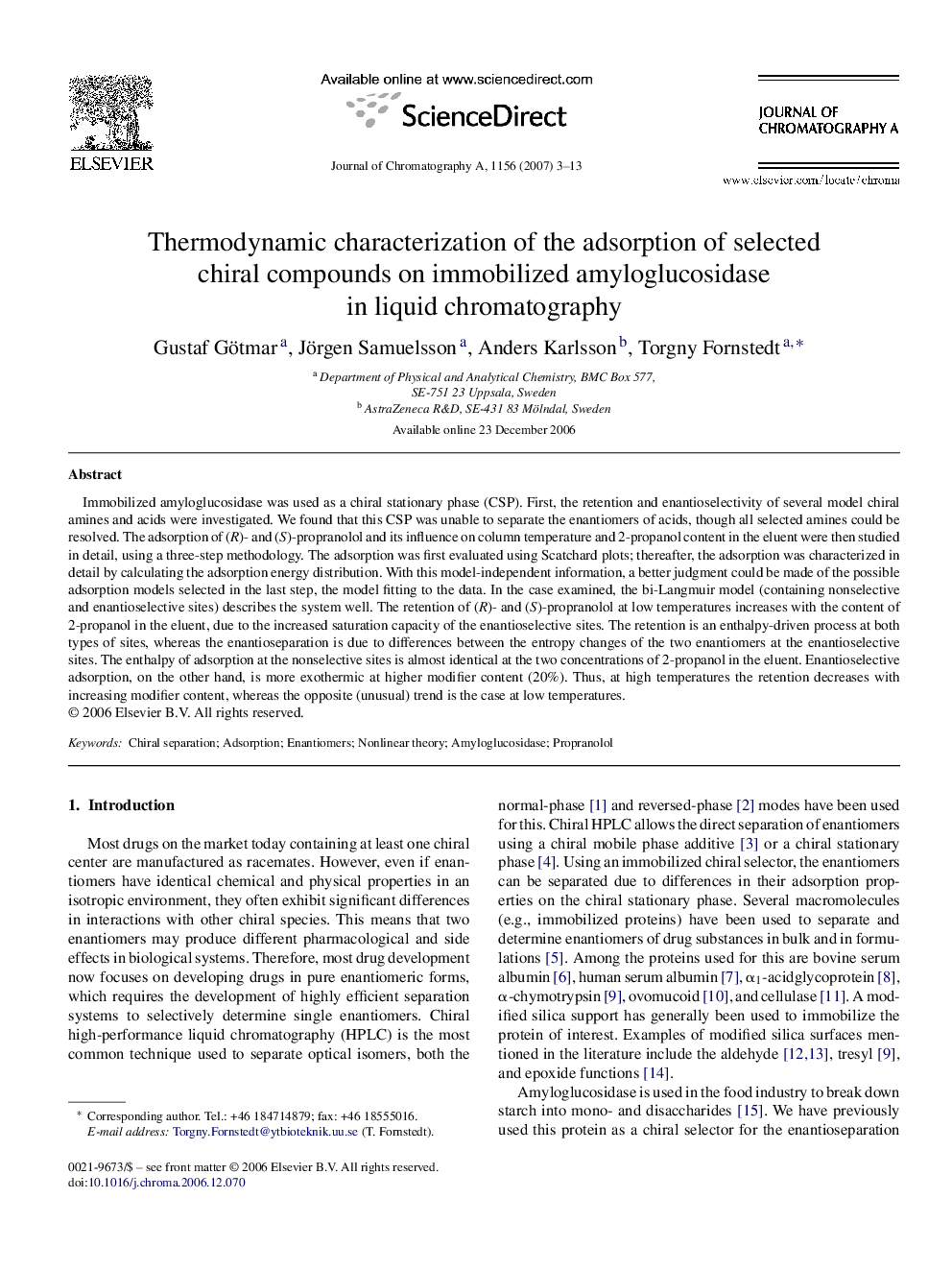| Article ID | Journal | Published Year | Pages | File Type |
|---|---|---|---|---|
| 1207161 | Journal of Chromatography A | 2007 | 11 Pages |
Immobilized amyloglucosidase was used as a chiral stationary phase (CSP). First, the retention and enantioselectivity of several model chiral amines and acids were investigated. We found that this CSP was unable to separate the enantiomers of acids, though all selected amines could be resolved. The adsorption of (R)- and (S)-propranolol and its influence on column temperature and 2-propanol content in the eluent were then studied in detail, using a three-step methodology. The adsorption was first evaluated using Scatchard plots; thereafter, the adsorption was characterized in detail by calculating the adsorption energy distribution. With this model-independent information, a better judgment could be made of the possible adsorption models selected in the last step, the model fitting to the data. In the case examined, the bi-Langmuir model (containing nonselective and enantioselective sites) describes the system well. The retention of (R)- and (S)-propranolol at low temperatures increases with the content of 2-propanol in the eluent, due to the increased saturation capacity of the enantioselective sites. The retention is an enthalpy-driven process at both types of sites, whereas the enantioseparation is due to differences between the entropy changes of the two enantiomers at the enantioselective sites. The enthalpy of adsorption at the nonselective sites is almost identical at the two concentrations of 2-propanol in the eluent. Enantioselective adsorption, on the other hand, is more exothermic at higher modifier content (20%). Thus, at high temperatures the retention decreases with increasing modifier content, whereas the opposite (unusual) trend is the case at low temperatures.
